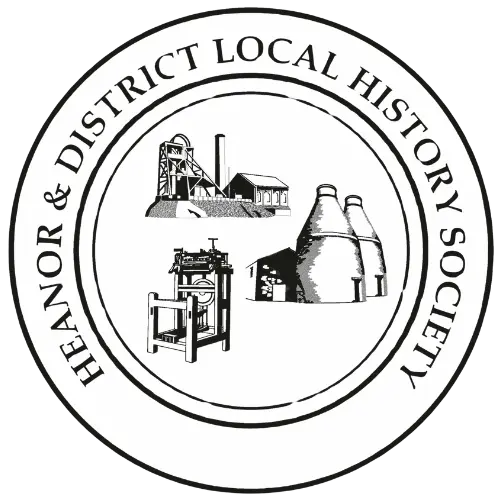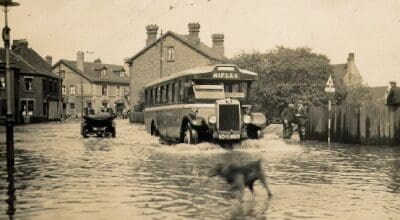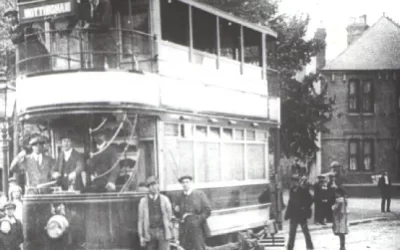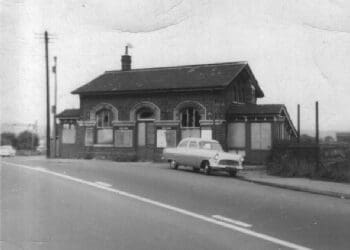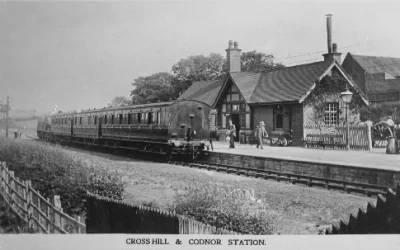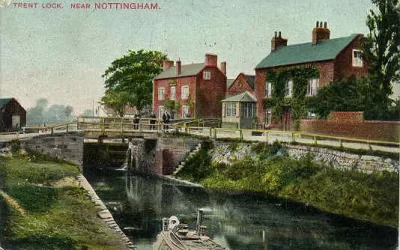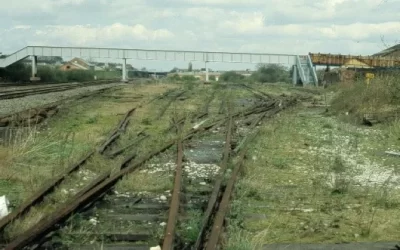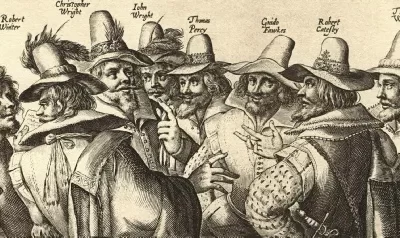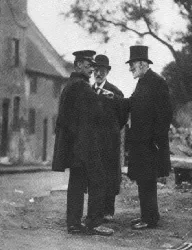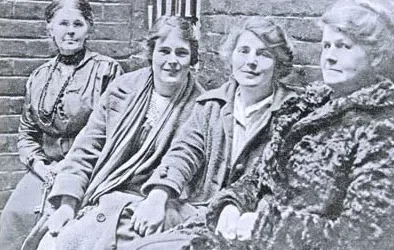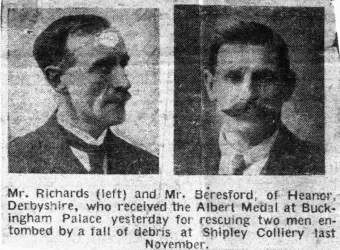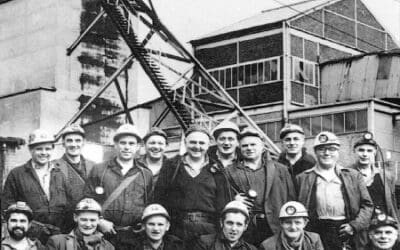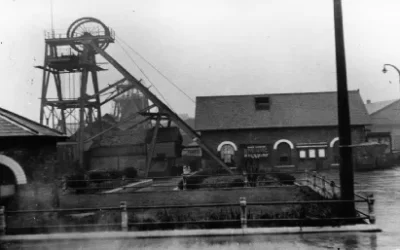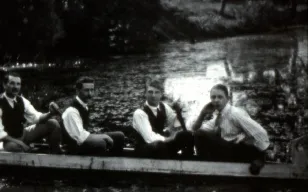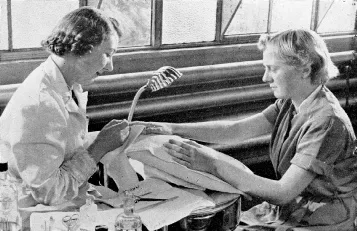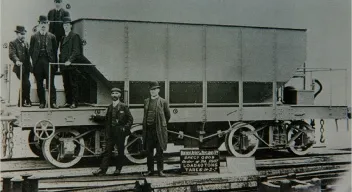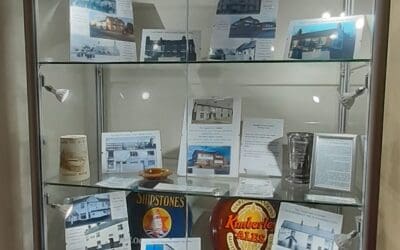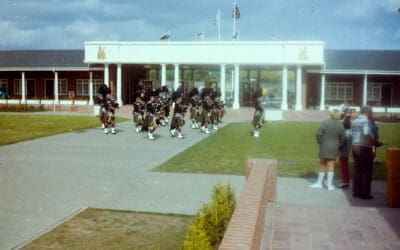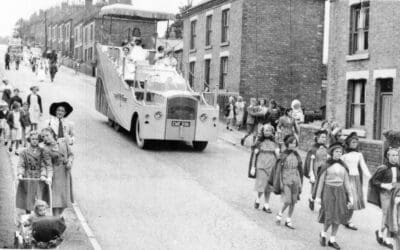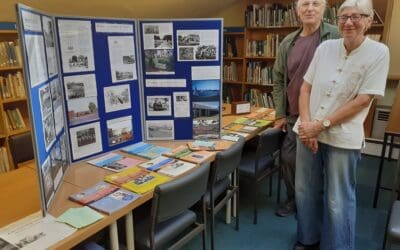A few stories to while away a winter’s night………
The Tantum Ghost
The most famous ghost story of the area, dating from 1795, is told by William Howitt to the author R.D. Owen in his book, “Footfalls on the Boundary of Another World.” [1860]
“One fine afternoon, my mother [Phoebe Howitt], shortly after a confinement, but perfectly convalescent, was lying in bed enjoying from her window the sense of summer beauty and repose, a bright sky above and the quiet village before her. In this state she was gladdened by hearing the footsteps which she took to be those of her brother Frank [Francis Tantum], as he was familiarly called, approaching the door. The visitor knocked and entered. The foot of the bed was towards the door, and the curtains at the foot, notwithstanding the season, were drawn to prevent the draught. Her brother parted and looked in upon her. His gaze was earnest and destitute of its usual cheerfulness and he spoke not a word. ‘My dear Frank’ said my mother, ‘How glad I am to see you! Come round to the bedside; I wish to have some talk with you.’ He closed the curtains, as complying, but instead of doing so my mother to her astonishment heard him leave the room, close the door behind him, and begin to descend the stairs. Greatly amazed, she hastily rang, and when her maid appeared she bade her call her brother back. The girl replied that she had not seen him enter the house. But my mother insisted, saying ‘He was here but this instant. Run! Quick! Call him back! I must see him!’
“The girl hurried away, but after a time returned, saying that she could learn nothing of him anywhere; nor had anyone in or about the house seen him either enter or depart. Now my father’s house stood at the bottom of the village and close to the high road, which was quite straight; so that anyone passing along it must have been seen for a much longer period than had elapsed. The girl said she had looked up and down the road, then searched the garden – a large old-fashioned one, with shady walks. But neither in the garden, nor on the road was he to be seen. She had inquired at the nearest cottages in the village, but no one had noticed him pass.
“My mother, though a very pious woman, was far from superstitious; yet the strangeness of this circumstance stuck her forcibly. While she lay pondering upon it, there was heard a sudden rushing and exited talking in the village street. My mother listened: it increased though up to that time the village had been profoundly still; and she became convinced that something very unusual had occurred. Again she rang the bell, to inquire the cause of the disturbance. This time it was the monthly nurse who answered it. She sought to tranquillize my mother, as a nurse usually does a patient: ‘Oh, it is nothing particular, ma’am,’ she said, ‘Some trifling affair!’, which she pretended to relate, passing lightly over the particulars. But her ill-suppressed agitation did not escape my mother’s eye. ‘Tell me the truth,’ she said, ‘at once! I am certain something very sad has happened.’ The woman still equivocated fearing the effect upon my mother in her then situation. And at first the family joined in the attempt at concealment. Finally however, my mother’s entreaties drew from them the terrible truth that her brother had been stabbed at the top of the village and killed on the spot.
“The melancholy event had thus occurred. My uncle, Francis Tantum, had been dining at Shipley Hall, with Mr Edward Miller Mundy, member of Parliament for the county. Shipley Hall lay off to the left of the village as you looked up the main street from my father’s house, and about a mile distant from it; while Heanor Fall, my uncle’s residence, was situated to the right; the road to the one country seat to the other crossing, nearly at right angles, the upper portion of the village street at a point where stood one of the two village inns, the ‘Admiral Rodney’ [later renamed the old Crown Inn], respectably kept by the widow H–ks [Hanks]. I remember her well – a tall, fine looking woman, who must have been handsome in her youth, and who retained, even past middle age, an air superior to her condition. She had only one child, a son, then scarcely twenty. He was a good looking, brisk young fellow, and bore a very fair character. He must, however, as the event shewed, have been of a very hasty temper.
“Francis Tantum, riding home from Shipley Hall after the early country dinner of that day, somewhat elate it may be with wine, stopped at the widow’s inn and bade her son bring him a glass of ale. As the latter hurried to obey, my uncle, giving the youth a smart switch across the back with his riding-whip, cried out in his lively, joking, way, ‘Now be quick, Dick; be quick!’
“The young man, instead of receiving the playful stroke as a jest, took it as an insult. He rushed into the house, snatched up a carving knife, and darting back into the street, stabbed my uncle to the heart as he sat on his horse, so that he fell dead on the instant, in the road.
“The sensation throughout the quiet village may be imagined. The inhabitants who idolized the murdered man, were prevented from taking summary vengeance on the homicide only by the constables carrying him off to the office of the nearest magistrate. Young H–ks was tried at the next Derby Assizes; but (justly, no doubt, taking into view the sudden irritation caused by the blow) he was convicted of manslaughter only, and, after a few months imprisonment, returned to the village, where, notwithstanding the strong popular feeling against him, he continued to keep the inn, even after his mother’s death. He is still present to my recollection, a quiet, retiring man, never guilty of any other irregularity of conduct, and seeming to bear about with him the constant memory of his rash deed – a silent blight upon his life.
“So great was the respect entertained for my uncle, and such the deep impression of his tragic end, that so long as that generation lived the church bells of the village were regularly tolled on the anniversary of his death.
“On comparing the circumstances and the exact time at which each occurred, the fact was substantiated that the apparition presented itself to my mother almost instantly after her brother had received the fatal stroke.”
The Foxhole Children
A sunny spring day in 1956. A 17 year old Heanor miner, keen on motorcycling, went off for a ride to Codnor Castle, and then rode down across the fields below the castle.
Around half a mile north-east of the castle, down the hill towards the Erewash, lies Foxhole Plantation. Between the castle and the wood is now an opencast site which is finally in the process of being restored after the extraction of minerals. On the edge of the wood is a small pond – nothing special, it has no known name, but it has been there for as long as maps can show – a slightly eerie place, even today, and even in the summer sunshine.
The young man stopped his bike, deciding to have a cigarette. As he leant against a tree, he saw two young children come out from by the pond – they stared at him, then walked off along a path away from him. Not a spot of mud on their shoes or clothes, and yet they had come from a part of the pond which was water-logged and deep with mud.
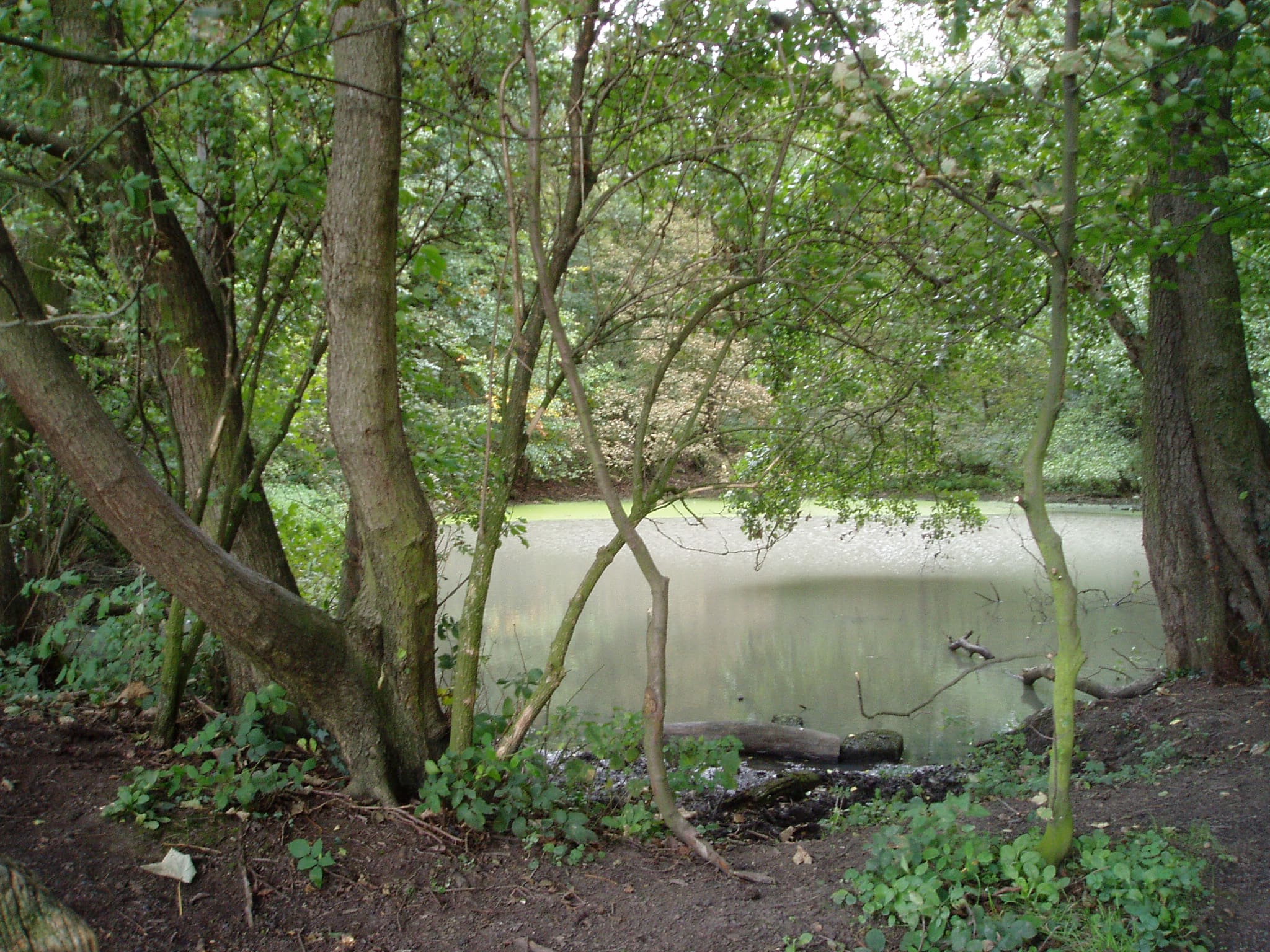
The children were two girls. The eldest, who walked in front, was 7 or 8 years old, and had blonde hair. The younger one, aged about 6, had brown hair. They were dressed in what he described as 1940s clothing. He followed, and called after them to see if they were alright, but there was no reply. Walking in complete silence, to the edge of the wood, they then climbed over a stile out of the wood, heading across the fields towards Kennels Farm. By now, the youth was himself caked in mud, but still the children were spotless. At this point, as he moved to follow them further, the youngest turned and said, “You can’t come!”. The children continued across the field and then, without warning, vanished.
Needless to say, the spectator in this story didn’t hang around very long to see what else happened! That said, he does believe that he has seen these same children again, many years later and in a different part of the country, in equally strange circumstances. But that’s another story…..!
Another Foxhole Spirit
Prompted by this website, we were contacted by a working medium, Yvette Sinclair-France, who tells of another encounter in Foxhole Plantation.
“The first Spirit I saw in Foxholes Plantation wood was a man hanging from one of the very old beech trees in the middle of the wood alongside the path that runs through the middle. He was dressed in clothes that would have put him around the end of the nineteenth century. Long dark hair, a finger tip length brown jacket, and high, brown leather boots. He terrified my dogs, who both refused to walk anywhere near the tree, and acted like a horse would when it shies around an object that startles it – the Jack Russell eventually bolted and ran all the way home. I tried to communicate with the man and was told he had hanged himself because his wife had left him for another man. He called her a Jezabel, and I learned that his name was John. I took 2 other friends who are mediums to the same wood. Didn’t tell them why, but just asked them to walk through it with me and stop where they felt or saw anything. With no prompting they both walked to the same tree, and described the same man who hanged himself, and gave the same reason for his suicide. I gather he did this around Yuletide, as many people have told me since that he is only seen there at that time of year – the anniversary of his death. I did some research by speaking to local people -a 92 year old woman recalled being told by her Aunt that a man had hanged himself in the wood when she was a girl.”
You may be sceptical; you may believe. Whatever, it is an interesting tale.
Sukey’s Hollow
(from the Society newsletter, 1991)
For many years, Sukey’s Hollow was a dark, lonely footpath lit only by one gas lamp in the middle near the White Cottage. The footpath was the nearest route between Heanor, Sye Lane and Marlpool, until the creation of Ella Bank Road, Claramount Road and Westfield Avenue around the end of the nineteenth century. Even in the 1930s, women, and even men, were very fearful of walking past the ruins after dark. Sukey’s Hollow was said to have been the site for two murders in the eighteenth century -a servant girl called Sukey and a woman named Nan Tantum. The white house was a lodge belonging to the Heanor Hall estate, and it could have been that Sukey, who gave her name to the footpath, was a servant there. Sukey’s ghost is said to haunt Sukey’s Hollow.
The Nan Tantum connection might have been through the house across the field on Hands Road at the top of the hill. The house stands next to The Starthe field and had its name on a stone reading “Tantum Cottage” but this has been obscured by rendering in recent years.
The dark and gloomy Victorian vicarage between Hands Road and the white house would do nothing to reassure people taking a short cut through Sukey’s Hollow on a wild, wintry evening.
Hardy Barn Murders
Hardy Barn is the name given to the steep hill down from Marlpool towards Shipley on the Heanor to Ilkeston road. Fred Fletcher, in his memoirs “The Cry from the Soil” tells how he started dating a girl from Ilkeston, so had to travel along this stretch of road on foot, just after the First World War.
He briefly tells of “the unsavoury happenings down Hardy Barn, a dark stretch of road leading to Ilkeston, where it was said, a murder was committed twice at the same spot. The first was the clubbing to death of the Royal Mail van driver – his horse was never found. The second was the strangling of a gamekeeper. My mother told me the murders happened and also she knew the ghosts of the victims. She suspected that I must be a screw loose – I would be daft to think of travelling on foot to Ilkeston in the dark. However, no ghost would stop me from meeting Lily, although I ran very fast on passing through Hardy Barn during the dark nights. To my relief, in November 1922, the Midland Bus Service opened between Heanor and Ilkeston.”
Any other references to these murders or ghosts would be appreciated.
Laying a “ghost” at Loscoe
Taken from the Eastwood & Kimberley Advertiser, 25 July 1930
During road works on Denby Lane, Loscoe, described as having “the unenviable distinction of being one of the worst stretches of road in the country,” a local character, Tom Allen, was given the job of night watchman. In the early hours of a dark misty morning, Tom was sitting half inside and half outside his watchman’s box, when he spotted something moving slowly up the lane, by the side of the palings running alongside the recreation ground.
Tom immediately thought it was a ghost, or, if not a ghost, then it had to be someone covered with a sheet trying to play a trick on him. The object was coming closer, and Tom did not want to be trapped inside his box, so, taking his stout walking stick for defence, he moved to the side of the road, away from the light of the fire, and waited for the arrival of the spectre. The suspense was terrible, and many thoughts passed through Tom’s mind – he was determined that he would get in the first blow.
So, advancing with raised stick, he was about to hit out when the ghost shouted, “Hey up! Hold on!”
Whereupon our hero replied, “It’s a good job you spoke, or you’d a got one.” He immediately recognised the supposed ghost as one of the employees of the Midland General Omnibus Company, in white coat and white hat, who was returning home after working a late shift. Before leaving, he confided to Tom that other people had been frightened by his ghostly appearance in the past.
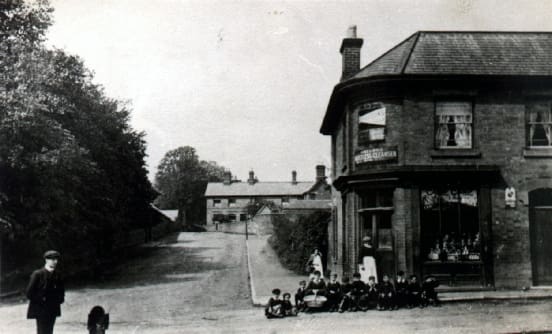
Do you know any other supernatural stories from the Heanor area? If so, please use the Contact page to let us know.
